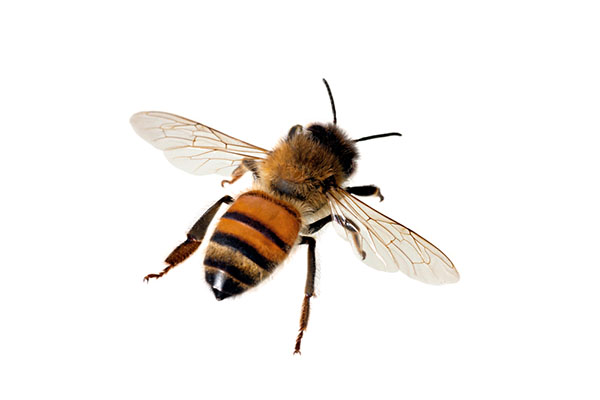Aside from being painful, bee stings can cause red lumps, swelling and itching. Read more about bee stings and what to do if you’ve been stung.

Should you get stung by a bee and suspect that you're having an allergic reaction, the first and most important step is to seek immediate medical attention. Bee sting venom has proteins that affect your skin and immune system, causing pain and swelling around the sting site. If you have a bee sting allergy, bee venom can cause a more serious immune system reaction that can have dire consequences.
According to Healthline, a leading provider of health information and medical resources, 3 percent of people are allergic to bee stings. Knowing whether you have a bee sting allergy is important so you can get prompt emergency medical care if necessary. Pay attention to your reactions to determine whether you have a life-threatening allergy, or you're just experiencing normal bee sting swelling and other symptoms.
The Mayo Clinic describes the differences between mild, moderate and severe (allergic) reactions, as well as reactions to multiple bee stings. Always consult your physician for guidance on preventing and treating bee sting reactions or a bee sting allergy.
Mild Bee Sting Reactions
Symptoms:- Immediate, sharp burning pain at the sting site
- A red welt
- Small white spot where the stinger punctured your skin
- Slight bee sting swelling
Recovery Time: Usually within a few hours
What it Means: Normal reaction
What to Do: See steps below for treatment of normal (mild) bee sting reactions.
Moderate Bee Sting Reactions
Symptoms:- Extreme redness
- Bee sting swelling that increases over a couple of days
Recovery Time: Five to 10 days
What it Means: Having a moderate reaction does NOT mean you'll have a severe allergic reaction next time. Some people experience moderate reactions every time they're stung.
What to Do: Make an appointment to see your doctor if your bee sting symptoms don't subside within a few days. Talk to your doctor about prevention and treatment, especially if your reactions get more severe each time.
Severe Allergic Reaction to a Bee Sting (anaphylaxis)
Symptoms:- Skin reactions, including hives, itching and pale or flushed skin
- Difficulty breathing
- Swelling of the throat and tongue
- Weak, rapid pulse
- Nausea, vomiting or diarrhea
- Dizziness or fainting?
- Loss of consciousness
According to the National Institutes of Health (NIH), symptoms usually occur within seconds, though may take longer to appear.
Recovery Time: After medical treatment
What it Means: Anaphylaxis is potentially life-threatening and requires emergency treatment. You have a 30 to 60 percent chance of experiencing anaphylaxis the next time you're stung.
What to Do: If you were prescribed an emergency epinephrine auto-injector (such as EpiPen), use it immediately as directed by your doctor.
Call 911 or other emergency services.
Talk to your doctor or an allergy specialist about prevention methods such as immunotherapy to avoid allergic bee sting reactions if you're stung again.
WebMD recommends you wear a MedicAlert bracelet and keep a self-care epinephrine sting kit on hand for emergencies. The epinephrine sting kit shouldn't take the place of medical attention.
Multiple Bee Stings
Symptoms:
- Nausea, vomiting or diarrhea
- Headache
- Vertigo
- Feeling faint or fainting
- Convulsions
- Fever
Recovery Time: After medical treatment
What it Means: When you get stung more than 12 times, the venom may produce a toxic reaction.
Multiple stings can be a medical emergency in children, older adults or individuals with heart or breathing problems.
What to Do: Seek prompt medical care.
WebMD recommends these steps to treat normal bee sting reactions
- If you’re stung on the hand, remove any rings immediately.
- Remove the venom sac and stinger within 30 seconds to avoid taking in more venom. Use your fingernail or a credit card to flick out the sac and stinger in a quick motion. Avoid squeezing the sac or pulling on the stinger since that releases more venom.
- Wash the sting area with soap and water, and then use an antiseptic.
- Apply a soothing ointment (such as hydrocortisone cream or calamine lotion), then cover with a dry, sterile bandage.
Additional recommendations include: application of ice pack or cold compress to reduce swelling; consulting with a medical professional to determine an over-the-counter oral antihistamine to reduce itching, swelling and hives and/or a non-steroidal anti-inflammatory medication (NSAIDs) such as ibuprofen.
Pregnant women should seek approval from their physician before taking any over-the-counter medication, and a physician should be consulted before children under 2 years of age are administered any oral medications. Always consult your physician for treatment recommendations.
Sources:
Mayo Clinic WebMD Medline Plus


